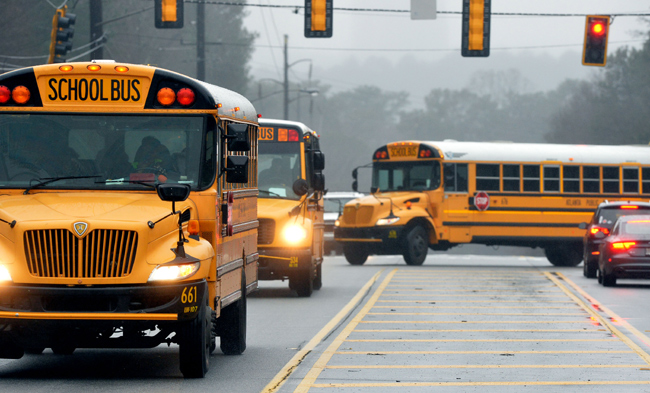A recent horrific crash involving a school bus and a dump truck occurred on Thursday May, 17 on I-80 in New Jersey, taking the life of one young student and one adult and sending dozens to three area hospitals. The impact was so severe that the passenger section of the bus was completely separated from the chassis and rolled over after striking the guardrail. The front of the bus, as well as the trucks cab, was completely destroyed. The cause of the crash was still under investigation at the time of this article
The outcome of this crash would have been a lot worse however, if New Jersey was not one of the seven states requiring seat belts on large school buses. The other states are California, Florida, Louisiana New York, Nevada and Texas (Nevada goes into effect July 1, 2019 for new school buses). With all the serious emphasis on protecting students with ID badges and lockdown procedures, why are 44 states still without seat belt requirements? The answer is not a mystery, it is quite simple – they say they can’t afford it and feel they can’t make the kids buckle up anyway. Then there is the question of liability, if a student was not buckled up or buckled improperly and an injury occurs. A child may actually be injured by the seatbelt if not properly worn. Some opponents also say seatbelts will prevent student from exiting quickly in an emergency.
The cost of a seat belt installation is the real major deterrent in getting states to pass legislature. The National Association of Pupil Transportation estimates that the cost of fitting school buses with seat belts is between $7000 and $11,000 per bus. With the deterioration of state funding and operating levies falling, seat belts on every school bus may be economically impossible without outside funding.
School bus seat belt supporters share a different viewpoint, arguing that seat belts will increase safety, reduce injuries and save lives, as was evident in the recent New Jersey school bus crash. Their claim is there is no valid reason not to wear seatbelts in school buses when everyone traveling in cars and trucks is required to wear them. Many believe that buckled in children are better behaved and less likely to distract the bus driver, resulting in fewer accidents involving school buses.
Concerning the cost of installing seatbelts, many supporters maintain a cost factor of approximately 10 cents per seat per day, which is considerably less than the $7000-$11,000 per bus. Supporters also claim the opposition is not considering the high litigation and settlement costs incurred from injuries that seatbelts would have prevented.
It is apparent that there are legitimate arguments on both sides of the issue of seat belts on school buses. Will states continue with their pursuit of school bus seatbelt legislation? To date, only seven states have enacted legislation requiring seat belts on large school buses. How were those states able to rationalize the necessary cost and provide safety for students, on the way to and from school and field trips? States should analyze the risks and benefits but also take examples from California, New Jersey, Florida, New York, Louisiana, Nevada and Texas that refrained from putting a price tag on their children’s safety.
Vititoe Law Group is a personal injury law firm committed to the safety of our children at all times. If you child was injured in an accident involving a school bus, contact a personal injury lawyer at Vititoe Law Group for a free consultation. We are here to help you and your child through your emotionally trying time.








